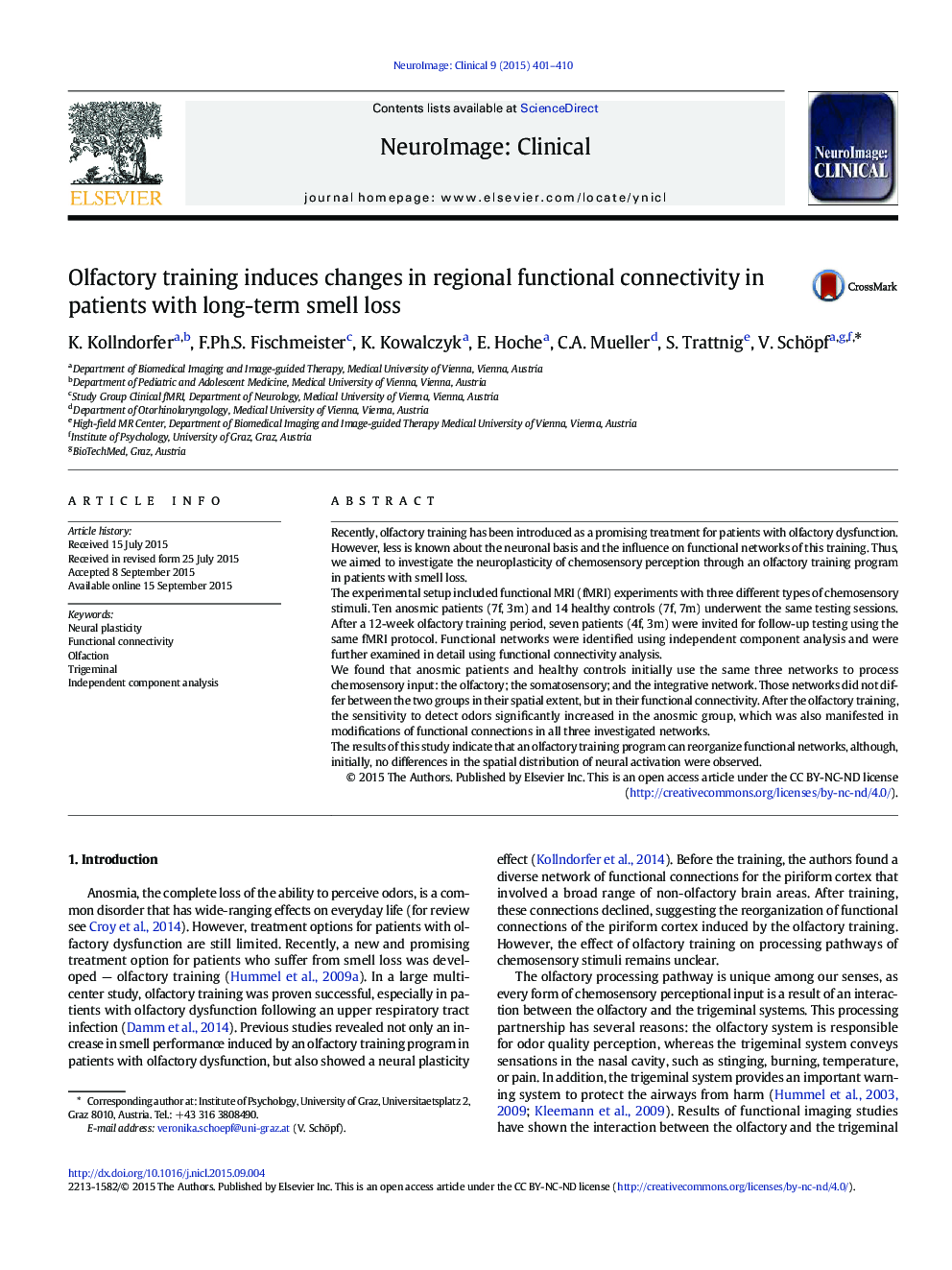| Article ID | Journal | Published Year | Pages | File Type |
|---|---|---|---|---|
| 3075188 | NeuroImage: Clinical | 2015 | 10 Pages |
•Anosmic patients and controls use the same three networks to process chemosensory input.•Altered functional connectivity was found in anosmic patients.•After olfactory training therapy patients were more sensitive to detect odors.•Training-induced changes of functional connectivity were determined.•An intact trigeminal system might be the key to olfactory therapy in patients with olfactory loss.
Recently, olfactory training has been introduced as a promising treatment for patients with olfactory dysfunction. However, less is known about the neuronal basis and the influence on functional networks of this training. Thus, we aimed to investigate the neuroplasticity of chemosensory perception through an olfactory training program in patients with smell loss.The experimental setup included functional MRI (fMRI) experiments with three different types of chemosensory stimuli. Ten anosmic patients (7f, 3m) and 14 healthy controls (7f, 7m) underwent the same testing sessions. After a 12-week olfactory training period, seven patients (4f, 3m) were invited for follow-up testing using the same fMRI protocol. Functional networks were identified using independent component analysis and were further examined in detail using functional connectivity analysis.We found that anosmic patients and healthy controls initially use the same three networks to process chemosensory input: the olfactory; the somatosensory; and the integrative network. Those networks did not differ between the two groups in their spatial extent, but in their functional connectivity. After the olfactory training, the sensitivity to detect odors significantly increased in the anosmic group, which was also manifested in modifications of functional connections in all three investigated networks.The results of this study indicate that an olfactory training program can reorganize functional networks, although, initially, no differences in the spatial distribution of neural activation were observed.
